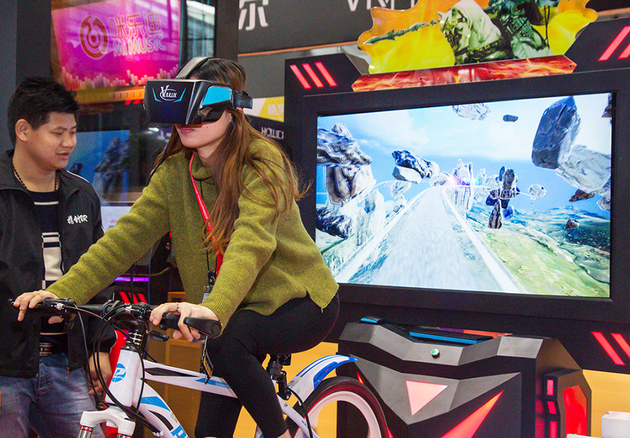May 7 (NBD) -- In the eyes of a number of investors, virtual reality (VR) isn't the optimal investment target at present despite the sector's great potential.
At a previous international conference on VR innovation, experts predicted China's VR market will top 10 billion yuan (1.6 billion U.S. dollars) this year. By 2021, the country will become the world's largest VR market with a projected market size of 79.02 billion yuan (12.4 billion U.S. dollars).
Currently, VR technologies are being applied in a range of areas like video, education, gaming, and shopping, but in the consumer area, VR products saw slowdown in growth.

Photo/VCG
The VR market has been on the decline since the second half of last year, Zhang Yi, CEO of iiMedia Research, said to NBD. Some companies did't manage to survive and some investors stopped investing. In fact, the VR-enabled consumer product market itself has bubbles, Zhang noted.
Previously, companies like Baofeng Group, Leshi, and HTC all bet big on VR products, but things didn't turn out as expected.
Senior industry observer Yang Liang, who began studying the VR industry from 1999 and now serves as the director of multinational VR and augmented reality software developer EON Reality in China, told NBD that VR consumer products are just like the first-generation iPhones. On the technology side, many underlying technologies are mature, but contents are extremely scarce. Beyond that, the shortage of talents, high costs, and uncertainties relating to the business model are also serious challenges facing the VR industry.
Zhang Jiacheng, managing director of famous investment institution Tongkong Capital, agreed with Yang's viewpoints about contents. In addition, Zhang mentioned two other reasons, namely, the lack of high-end VR hardware and poor user experience.
The VR industry is at its early stage, and the industry growth depends largely on the maturity of hardware technology. However, the current VR products with a refresh rate of 75-90Hz can only meet the entry-level demand, and traditional screens are unable to offer low latency display. More importantly, GPU chipsets are not good enough to meet requirements, Zhang added.
This to some extent dampens the enthusiasm of investors.
Despite the increasing understanding of VR, the technology is largely used to improve efficiency or workflow, and it will take at least four to five years to see the technology's extensive adoption in the consumer area, Yang Liang held.
Yang Guang, head of investment at venture capital firm Cybernaut Investment Group's innovation department, said his company now won't exert great efforts to invest in some specific VR projects, because compared with the sought-after artificial intelligence, VR doesn't see much change in technology.
However, some institutions are still bullish on the consumer VR product sector.
iiMedia Research said in a research report the year 2019 will be an inflection point for content providers of consumer VR products, and major content suppliers will turn profitable at that time. Even so, the market research firm's Zhang Yi admitted that VR products won't become a must-have for common people. Taking VR games for example, Zhang said users prefer simplicity, but current products are not portable and the user stickness is insufficient due to limited contents.
Email: lansuying@nbd.com.cn


 川公网安备 51019002001991号
川公网安备 51019002001991号





